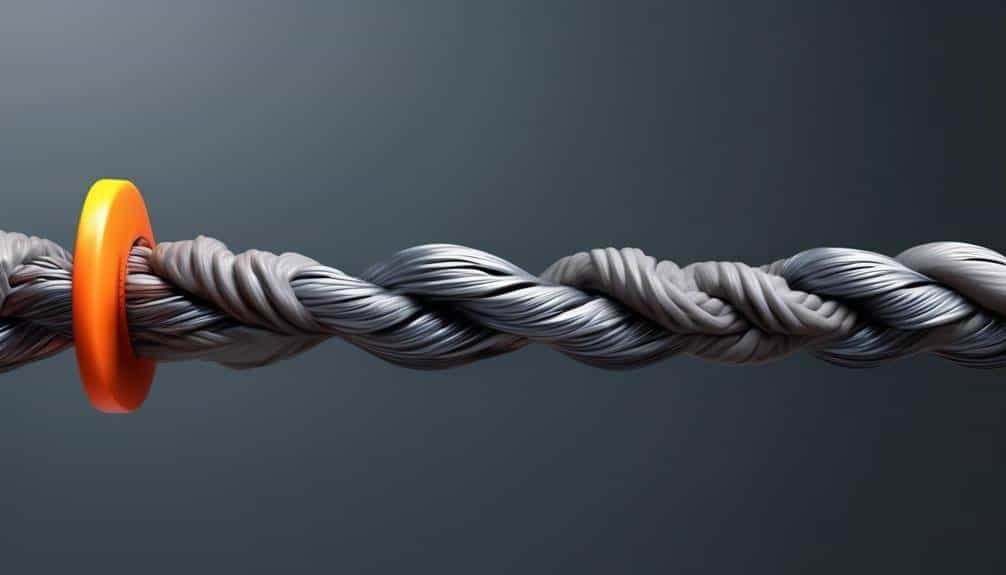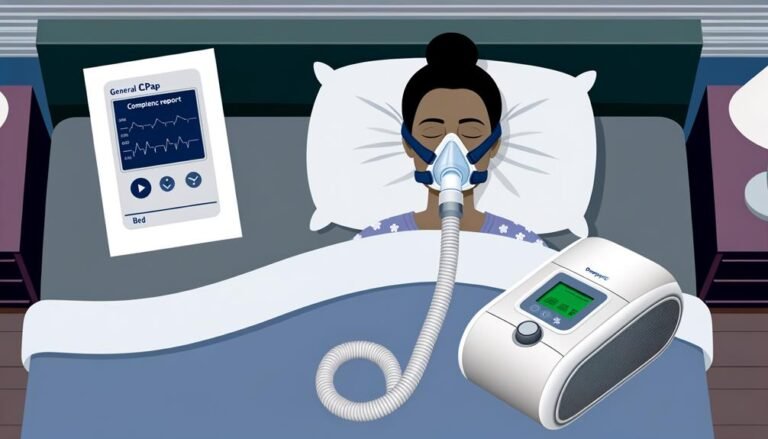What Does the Term Attenuation Mean in Data Communication?
|
Getting your Trinity Audio player ready...
|
Imagine you're standing at the edge of a vast ocean, ready to dip your toes into the water. But as you take that first step, you notice that the waves have lost their strength, gradually dissipating into gentle ripples before reaching you.
This phenomenon, known as attenuation, is not limited to the ocean—it also plays a crucial role in data communication. But what exactly does attenuation mean in this context? And why should you care?
Well, dear reader, in this discussion, we will unravel the mysteries of attenuation, exploring its causes, effects, and the methods used to measure it.
So, buckle up and prepare to dive into the depths of data communication!
Key Takeaways
- Attenuation refers to the reduction in signal strength during transmission in data communication systems.
- It is caused by factors such as poor cable quality, longer cable lengths, electromagnetic interference (EMI), and signal frequency.
- Attenuation weakens the signal, leading to decreased signal-to-noise ratio and overall data quality.
- Methods such as power meter, OTDR, optical spectrum analysis, and cutback technique can be used to measure attenuation in communication systems.
Understanding Attenuation in Data Communication
To understand attenuation in data communication, you need to grasp how signal strength diminishes over transmission distance.
Attenuation refers to the reduction in signal strength during transmission, and it's a critical factor in data communication systems.
As the signal travels through the transmission medium, it experiences signal degradation and signal loss. Signal degradation occurs when the quality of the signal deteriorates, resulting in errors and distortions.
Signal loss, on the other hand, refers to the complete disappearance of the signal due to various factors such as distance, interference, and impedance mismatch.
Both signal degradation and signal loss can significantly impact the performance and reliability of data communication systems.
Understanding and mitigating attenuation is crucial in designing and maintaining efficient and robust communication networks.
Causes of Attenuation in Data Transmission
Attenuation in data transmission is caused by various factors that lead to a reduction in signal strength. One of the main causes is cable quality. Poor quality cables have higher resistance, which results in more signal loss. Another factor is the length of the cable. The longer the cable, the more attenuation occurs. Additionally, electromagnetic interference (EMI) can cause attenuation. EMI disrupts the signal and leads to signal loss. Lastly, the frequency of the signal can also contribute to attenuation. Higher frequency signals are more susceptible to attenuation than lower frequency signals. It is important to consider these factors when setting up a data transmission system to minimize attenuation and ensure reliable communication.
| Factors | Causes of Attenuation |
|---|---|
| Cable Quality | Poor quality cables have higher resistance and result in more signal loss. |
| Cable Length | Longer cables lead to more attenuation. |
| Electromagnetic Interference (EMI) | EMI disrupts the signal and causes signal loss. |
| Frequency of the Signal | Higher frequency signals are more susceptible to attenuation. |
Effects of Attenuation on Data Quality
The impact of attenuation on data quality becomes evident as the signal strength diminishes and introduces errors into the transmitted data. Attenuation causes the signal to weaken, resulting in a reduction in signal strength at the receiving end. This reduction in signal strength leads to a decrease in the signal-to-noise ratio, which affects the overall data quality.
The effects of noise become more pronounced as the signal degrades due to attenuation. Noise refers to any unwanted variation or interference that affects the signal. As the signal weakens, the noise can interfere with the transmitted data, leading to errors and a decrease in the accuracy of the received information.
Therefore, attenuation can significantly impact data quality by introducing signal degradation and increasing the effects of noise.
Methods to Measure Attenuation in Communication Systems
One common method to measure attenuation in communication systems is by using a power meter. This device measures the optical power at different points in the system and calculates the loss between them. When measuring attenuation, it's important to consider the specific characteristics of fiber optics.
Here are three key methods to measure attenuation in fiber optics:
- Optical Time-Domain Reflectometry (OTDR): This method uses a pulse of light to measure the time it takes for the reflection to return to the source. By analyzing the time and intensity of the reflection, the attenuation can be determined.
- Optical Spectrum Analysis: This method involves analyzing the spectrum of the optical signal to determine the loss at different wavelengths. It provides a detailed view of the attenuation characteristics across the entire spectrum.
- Cutback Technique: This method involves physically cutting the fiber and measuring the power before and after the cut. By comparing the two measurements, the attenuation can be calculated.
Overcoming Attenuation Challenges in Data Communication
To overcome attenuation challenges in data communication, it's crucial to implement effective signal amplification techniques. Attenuation refers to the loss of signal strength as it travels through a medium. This loss can result in reduced data transfer rates and degraded signal quality.
One way to overcome signal loss is by using repeaters. These devices amplify the signal at regular intervals along the transmission path, compensating for the attenuation and ensuring the signal reaches its destination with minimal loss.
Another approach is the use of equalizers, which compensate for frequency-dependent attenuation by adjusting the signal to maintain a consistent amplitude across different frequencies.
Additionally, improving the quality of the transmission medium, such as using better cables or optical fibers, can also help minimize signal loss and improve data transfer.
Conclusion
So, in conclusion, attenuation in data communication refers to the loss of signal strength as it travels through a communication system. This can be caused by various factors such as distance, interference, and the medium used for transmission.
Although attenuation can degrade data quality, it can be measured and mitigated through various methods. While some may argue that overcoming attenuation challenges is complex and time-consuming, it's crucial for ensuring reliable and efficient data transmission, which is essential in today's interconnected world.







